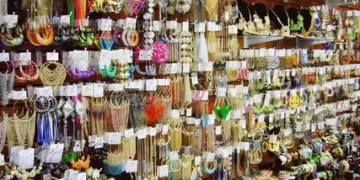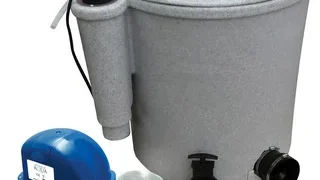What is a Dieline in Packaging & Print
The word “dieline” will come up often while you’re researching and creating your own personalized boxes!
This may seem like a fancy word that only someone who understands packaging would use to the uninformed.
In actuality, however, it’s rather easy and vital to the creation of your personalized package.
Determining Dielines
Dielines are essential for communicating your packaging requirements and expectations to manufacturers and designers.
It acts as a template to guarantee that the designs on your package are arranged correctly.
Dielines aid in the visualization and formatting of artwork designs to precisely suit your packaging by highlighting all of the cut and fold lines of the package in its flattened state.
You can see where and how your artwork will be shown by looking at dielines.
Dielines simplify this process by allowing you to see through your box’s flat structure to all sides.
Consider this: your canvas is your dieline!
To direct die-cutting machines and printers where to cut, fold, and print on your package, dielines emphasize the cutlines, fold lines, crease lines, bleed lines, and safety zones.
Fold lines: The fold lines, which are shown in red, show where the packing should be folded to assemble your box. They guarantee precise outcomes and eliminate any possibility for misunderstanding while building your package.
Cut lines: These are shown as black lines and serve as a die-cutting machine’s map.
Bleed lines: Identified by a solid green line, bleed lines map the extra area to take into consideration any substrate movement during printing and help you prevent having uneven borders in your artwork.
Safety lines: Denoted by green dotted lines, these lines provide a buffer that makes sure no significant artwork will be chopped off during trimming.
Glue tabs: Identified by green crisscross tabs, these tabs show where adhesive should be used during package creation.
Corrugated Boxes provide a durable and lightweight packaging solution, designed to protect products during shipping and handling, while also being eco-friendly due to their recyclability and use of sustainable materials.
Dielines: Their Significance
The dielines provide you with the first look at your finished package design.
In addition to serving as the primary template for the artwork design, it is essential to the die-cutting procedure and the building of all packaging.
Consider it a blueprint that guarantees correctness in all the tangible components of the finished printed product, such as:
- Proportions of packaging
- Positioning printed pictures, text, and logos Cutlines
- Bleeding lines
- Crease lines
- Creases
- Adhesive tabs
- Additional sites of linkage.
You will have a decent notion of the final package’s appearance after dielines are created and assembled.
Dielines are often used in the manufacturing of brochures, food packaging, beverage packaging, and virtually any product that needs specialized packaging.
You may feel more at ease knowing that the positioning, colors, dimensions, and patterns of your package are all correct when you have a clear picture of it before the die-cutting process begins.
Additionally, while the flat laying plan gives you a general idea of your design, checking your dieline enables you to identify any mistakes in the text, design, or even dimensions.
Dielines are a lot harder to understand than they first seem, even while they could seem like a fast and simple method to get your custom packaging project started.
To construct the box you want, a lot of consideration goes into the location, size, and styles of your dieline.
The artwork will need to be edited and repositioned several times before you can start the die-cutting process.
To guarantee correct results, it is crucial to go through each proofing step of your dielines before beginning the die-cutting process.
Note: Before proceeding with mass manufacturing, you can also request prototypes of your completed package to conduct a final verification of your design and structure.
Ecommerce Boxes are essential for ensuring safe and secure product delivery, offering customizable designs that enhance the unboxing experience while providing brands with a unique opportunity to make a memorable impression on customers.
How a Dieline Is Made
You probably won’t have to worry about how the dieline is made if you are working with a package designer or manufacturer; it is the designer’s responsibility.
Creating a dieline often requires the use of computer software design tools like Adobe Illustrator or ArtiosCAD.
Selecting a tool sometimes comes down to personal choice, since there is no instrument that is completely better than any other.
Giving package designers samples of finished packaging designs or boxes that most closely resemble your concept is the greatest approach to guarantee that deadlines are met.
In this manner, you provide the designer with a solid starting point that you can both work to refine until the desired final package is achieved.
A manufacturer will almost certainly provide you a finished dieline with remarks and bleed needs.
This is the simplest method for creating a dieline since all you need to do is place your artwork designs on the dieline and make sure the colors match precisely.
Dieline Requirements
Dielines have to be created as vector graphics for computers because they need lines that are mathematically specified.
When creating a dieline, requirements must be entered with great care.
Before finalizing, you may also wish to make a hard copy prototype of the dieline. Prior to final manufacturing, this step is mostly used for mistake correction.
Cartons are versatile packaging solutions used across various industries, providing sturdy protection for products while being easily customizable for branding, and they contribute to sustainability efforts through recyclable and biodegradable materials.
Investigating the Die-Cutting Method
Die-cutting machines use a die to cut out your package.
A die is a specialized instrument used in the manufacturing sector, usually in conjunction with a press, to cut or shape material.
Similar to molds, dies are often made specifically for the object they are intended to make.
You must first make a set of dies that precisely fit the geometries of your flattened, disassembled dielines in order to operate a die-machine correctly.
Dies are tiny metal objects that pierce through the packaging material of your choice. They have an elevated outline on one side.
A die-cutting machine will use rollers and cutting plates to press against a die to push through the material of the package and produce a precise form and size for your packaging after producing a dieline for it.
Through the die-cutting process, your dielines provide the die cutting machine with specific guidelines to follow in order to build and construct your exact package design.
Note: The die cutting equipment accurately cuts the material on a mass scale while your dielines are printed into enormous sheets.
Dielines, as you can see, are quite important to the overall appearance of your package. Therefore, it’s critical to comprehend dielines and their creation.
Flat Boxes offer a space-efficient packaging solution, ideal for shipping slim products or storing items compactly, while minimizing material use and reducing shipping costs due to their streamlined design.







